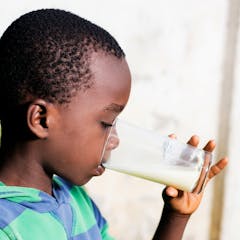
Articles on Hunger
Displaying 81 - 100 of 229 articles

Hunger is not the cause of the current social upheaval. But, taken along with other deep-rooted structural inequalities, it provides additional fuel for socio-political conflagration.

Expanding free lunch programs could also reduce stigma for students, lower administrative burdens for schools and create jobs for communities.

For many of the children who don’t get enough to eat, the consequences could last a lifetime.

South Africans should not panic about the food system. But authorities will need to act swiftly and assertively to restore stability.

Newer measures of poverty may do a better job of counting America’s poor, which is necessary to helping them.

New data shows how high prices and low incomes prevent 4 in 10 people worldwide from buying enough nutritious foods for a healthy diet.

Harsh socio-environmental factors, especially when they happen in the early years of a child’s life, can establish a developmental “biology of misfortune”.

As the global South transitions to a predominantly urban future, food offers a way to understand the role of cities in future development.

Shakuntala Haraksingh Thilsted, a native of Trinidad and Tobago, is the winner of the 2021 World Food Prize for her work identifying small fish as valuable nutrition sources for developing countries.

While long lines and food shortages are frustrating for most consumers, they can be physically and emotionally grueling for people with disabilities.

Chronic absenteeism is a pressing issue in high-poverty schools, but research suggests that serving students breakfast during class can help keep kids in school.

To overcome food insecurity, especially in a pandemic, Nigeria’s emergency preparedness requires a total overhaul of it’s agri-food supply chain.

New research shows both adults and kids are eating more nutritious food. But minorities and low-income populations still lag behind the rest.

The federal government has temporarily widened eligibility for food assistance to more students. Two scholars argue this needs to be made permanent and be accompanied with an awareness campaign.

Students are spreading out when they eat and using more single-serve packaging. Future changes to school meals could be less visible.

A team of experts are projecting that after a steep increase in 2020, food insecurity rates will dip in 2021. But behind this is a racial gap – rates for Black Americans will remain stubbornly high.

Food insecurity affected many students even before the pandemic hit, with international students the worst hit. But students and universities have shown a lot can be done to end the problem.

It’s possible to feed the world’s 7.8 billion people with more environmentally friendly farming practices. Here’s how.

Poor nutrition stunts children’s growth and hollows out their life chances.

Our study found that people who prepared their own food or watched their food being made ate more on average.
